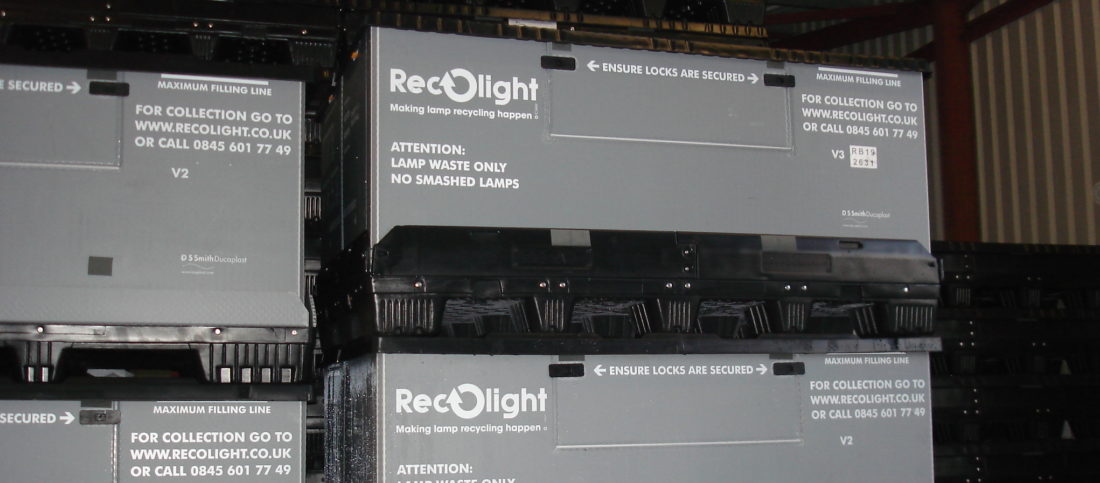The right container for waste lamps

Breakage of waste lamps, either when they are placed in a container, or during transport, is probably the biggest source of fugitive mercury emissions associated with lamp recycling. As a result, the correct design of waste lamp containers is vital to ensure that lamps can be collected and transported intact. That is why Recolight has paid very considerable attention to the design and testing of the principal container used within our network.
Storing your waste lamps correctly
But container design is only half the story. The way in which the container is used is also critical. Users can cause significant mercury vapour release from even the best designed container. The key considerations for users are:
- Waste lamps should always be placed carefully into the container, and never dropped. Waste lamps are fragile and mishandling is likely to result in breakage.
- Segregate linear and non-linear lamps. This is usually achieved by having two separate containers, although a few container designs include separate compartments.
- Stack waste lamps carefully. Lamps that are poorly stacked can frequently be broken during transport, when containers are jolted by bumps in the road. Neatly stacking all lamps minimises any movement, and dramatically reduces the risk of breakage while being transported.
- Avoid creating a ‘fulcrum’, or anything which can focus all of the weight of a stack of lamps onto one point, which can cause breakages. Good stacking practice (all lamps laid in the same direction) can ensure that the weight of the stack is spread evenly across the whole lamp length.
- Always lock the container if it is not in a supervised area, and ensure the lid is always replaced and fully closed after adding lamps.
- Ensure the container is assembled following the instructions carefully.
- Never over fill your container.
There are certain types of waste lamp container that Recolight no longer use. Any container that may be stored vertically naturally encourages the user to move the container repeatedly between horizontal and vertical when filling or moving it. This could result in high levels of lamp breakage. In the same way, any container that could be moved by rolling could also result in increased lamp breakage.
Recolight container testing
In order to ensure Recolight’s containers perform correctly, we arranged for a number of tests to be carried out. We used BSI to undertake Ingress Protection (IP) testing to check that no water can enter the container under normal conditions.
We undertook stack ability testing to determine the maximum number of containers that can be placed on top of each other. A range of dynamic and static handling tests were also performed to assess handling of full containers.
It is our view that there is no perfect waste lamp container. All designs have pros and cons – but the testing we have performed makes us confident that Recolight containers perform very well.

